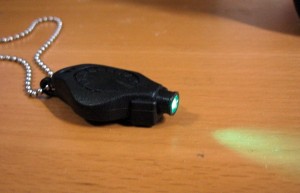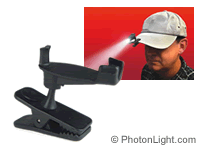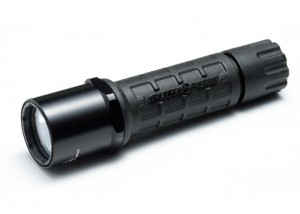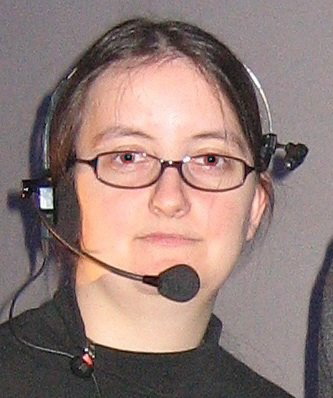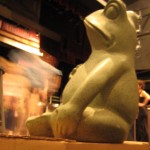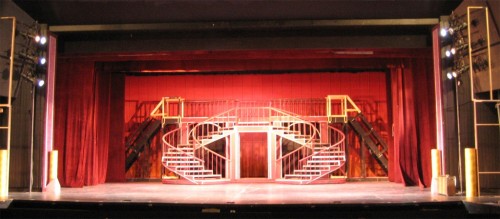Day 3 of my preproduction week.
A recap:
Day 1
I spent most of the day at home doing some light paperwork and emailing, then went into the office for about an hour to read and fill out about a thousand forms. For those curious, this includes the regular stuff you have to fill out when you start a job: W-4, I-9, NYS tax withholding form, employer’s info sheet for their records, and direct deposit paperwork. Then the contract, which in this particular case consists of the Equity contract itself, the basic Letter of Agreement rider, and a very extensive rider which covers mostly matters related to touring — what kind of housing, per diem, etc. A lot of it was new information, and the only surprises were pleasant ones, so that made me happy.
Day 2
I went into the office for about 3 hours and started off making copies of some research packets we’re giving the cast at the first rehearsal. The first show we rehearse, The Spy, takes place during the American Revolution, so the packets are all historical information, timelines, and maps from that period. Then I spent the rest of the day catching up on some paperwork, getting more accurate information about actors’ conflicts and passing it on to the directors (each show has a different director).
Today is
Day 3
…and my first full day at the office. Because there’s not a spare desk for me I’ve wound up parked in the conference room, trying not to look like I’m taking over the entire thing. But essentially, yes, I have the corner office.
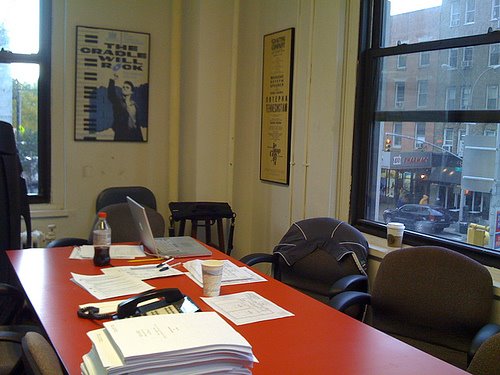
In the meantime, the first rehearsal draft of the script landed in our inboxes during the day. The play is a new adaptation, and will be changing during the process, but this is the version we will begin rehearsal with. So I threw that in the fancy and so-far-very-dependable copier and made 20 copies.
There was also a staff meeting today, which I was invited to attend. Most of it was about the company’s upcoming annual gala, which I have nothing to do with, but there was an opportunity to talk about arrangements for our first rehearsal. After the meeting concluded I discussed a bit more in depth in a side meeting with the production manager and general manager. The company manager and I have been meeting periodically for a few minutes here and there over the last couple days, as issues come up. Subjects have included my flight to Minneapolis (to which my answer was, “sure, whenever.” I’m easy like that), hospitality info packets for our stay in Minneapolis, catering for the meet-and-greet. She’s totally on the ball, and I feel fantastic about that.
I also got my first paycheck today. My ASM, Nick, showed up at the office in response to my email that his check was waiting, and I loaded him up with the new copy of the script fresh off the presses, the Equity LORT rulebook, and the 6-page stage manager’s guide to rehearsing at New 42nd Street Studios. He’s officially on contract starting today, but I’m trying to go easy on the workload with him because honestly I don’t really think there’s that much for him to do right now. On Friday we’re going to meet at the office and spend the day preparing boxes of office supplies, spike tape, and whatever else we are going to be loading into the studio on Monday. The “we” of that component actually means Nick and I show up at the studio at 10 on Monday and the stuff we left in a corner of the office will magically be delivered, along with all the props, by our production manager and crew. We agreed that this is indeed a very high-class production.
Most of what I’ve been dealing with today is the deadline to get some paperwork in to the New 42nd Street Studios, where we’ll be rehearsing in New York. A lot pertains to our meet-and-greet on Monday. The studio is pretty much the premiere place to rehearse a show, and since they deal with high-profile productions, they are used to this kind of event being a big undertaking. Apparently they reserve the right to hire a fire guard at additional cost if they think your meet-and-greet is a little too ambitious. I don’t think we’re going to have that problem. But they need a head count and they need the names of all our attendees, which includes the cast and production staff as well as invited guests such as board members and guest speakers, because from all I’ve heard, if you’re not on the list you’ll have a hell of a time getting past the front desk. They also need to know who is delivering our catering, and at what time. So since all that information was constantly being updated, it took me literally the entire business day to fax these forms.
Another full day at the office for Day 4.




